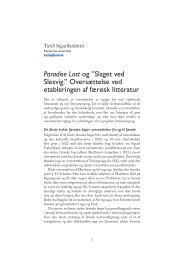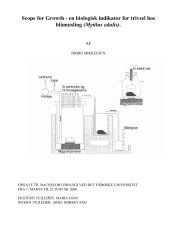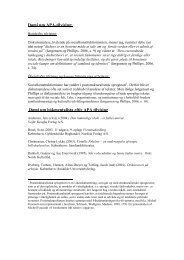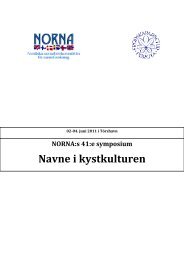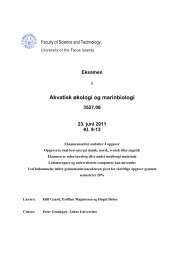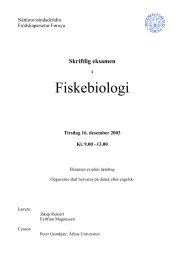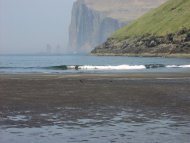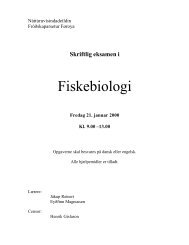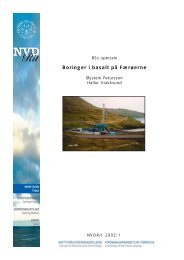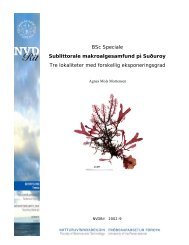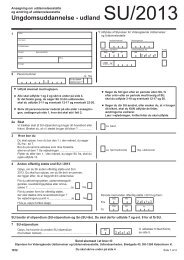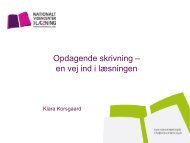Infectious Pancreatic Necrosis Virus (IPNV) - Fróðskaparsetur Føroya
Infectious Pancreatic Necrosis Virus (IPNV) - Fróðskaparsetur Føroya
Infectious Pancreatic Necrosis Virus (IPNV) - Fróðskaparsetur Føroya
Create successful ePaper yourself
Turn your PDF publications into a flip-book with our unique Google optimized e-Paper software.
We compared our three L. monocytogenes positive samples with the two old samples, to see if<br />
there was an “in house culture” of L. monocytogenes contaminating the processing plant. It is<br />
not likely that the processing plant has an “in house culture”. Which is also shown in the<br />
bootstrapped tree (Figure 4 and Figure 5) where the old samples and the samples we took in<br />
the processing plant clearly belong to two different subgroups. However the old samples are<br />
identical to samples (1C, 3C, and Ref. C) taken in fjord C. If we only look at our L.<br />
monocytogenes positive samples (S24, S41, and S51) the samples are identical. Even if they<br />
are not found in the same place, it is probable that the bacteria come from the same<br />
contamination source. This contamination source is probably the seawater from harvesting<br />
site A, because it is identical to our three positive samples. The trees show that the three<br />
positive samples from the plant (S24, S41, and S51) were identical to the two seawater<br />
samples (Ref. A, and 8A) but slightly different from two other seawater samples from fjord A<br />
(4A and 9A). Somewhat speculatively, this might suggest that “S24/S41/S51/Ref. A/8A”<br />
variant is more common than the other variants in fjord A as S41 and S51 were sampled five<br />
weeks after S21. Alternatively, the bacteria could have originated from the same unfortunate<br />
contamination event.<br />
We also wanted to exclude the possibility that L. monocytogenes polluted seawater was<br />
pumped into the road tanker. No L. monocytogenes was found in these samples. It therefore<br />
appears that the purification procedures for the road tanker seawater was efficient enough.<br />
There is no indication in our results that precautions must be made after the fish is eviscerated<br />
in our results. However it is difficult to make a definite conclusion of that matter when we<br />
only found three L. monocytogenes positive samples in the processing plant.<br />
30



